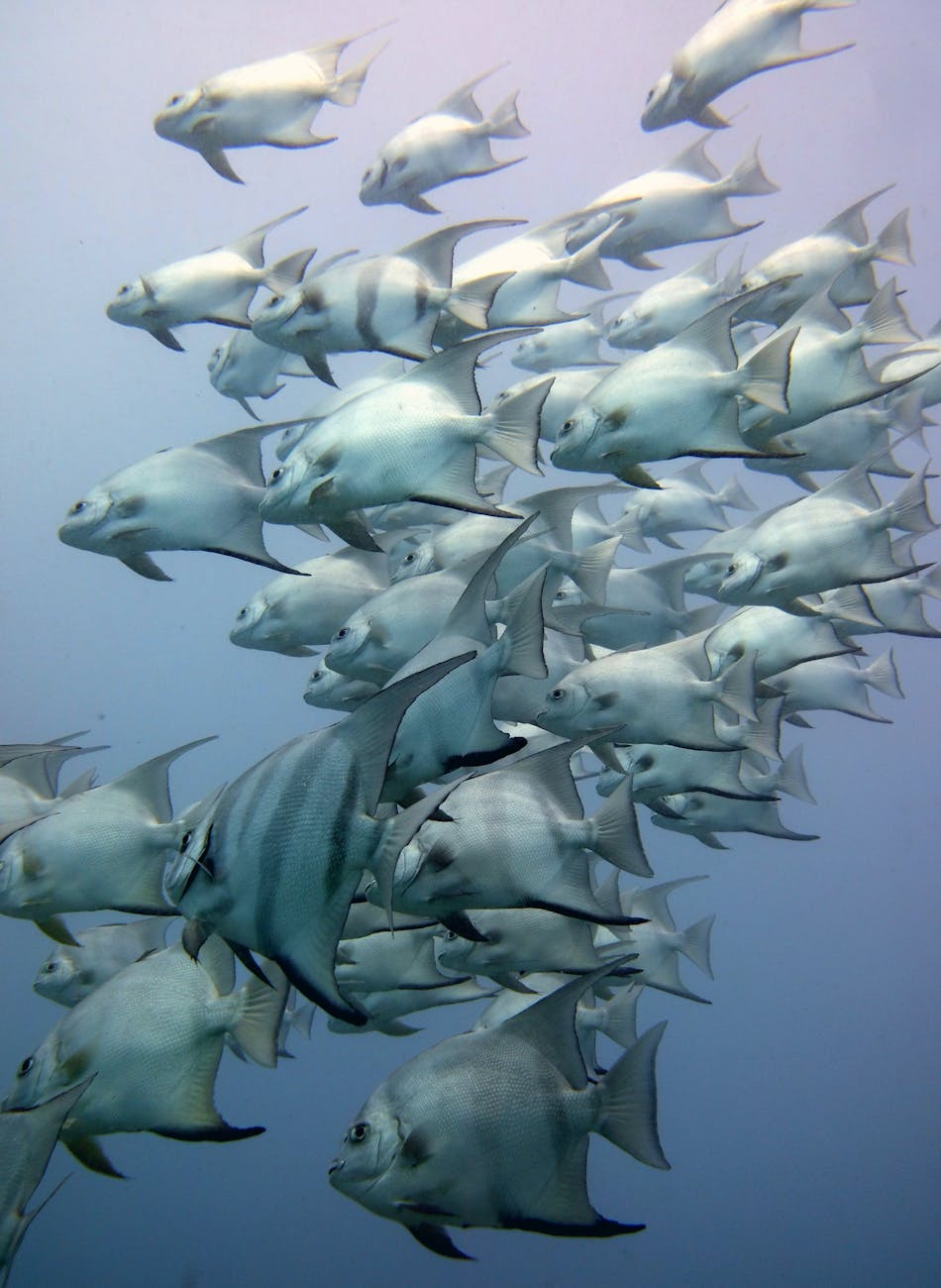Title: Names of aquatic animals – animals that lives in water
Explore the fascinating world and names of aquatic animals, i.e. animals that lives in water, from clownfish and dolphins to octopuses and sea turtles. Discover their unique habitats and incredible adaptations that help them thrive in diverse underwater environments.
Introduction
The aquatic world is home to a vast array of animals, each uniquely adapted to thrive in their environments. From the depths of the oceans to the shallowest ponds, these creatures have developed incredible traits that allow them to survive and flourish. In this hall, we will study some notable names of aquatic animals, highlighting their habitats and adaptations.
See Also
- Types Of Aquatic Habitats, characteristics and examples
- Aquaculture and fish farming, importance and methods
Names of aquatic animals you need to know: Animals that lives in water.
Mammals:
- Dolphins
- Whales
- Seals
- Walruses
- Otters
Fish

- Salmon
- Tuna
- Swordfish
- Goldfish
- Angelfish
- Tilapia fish
Reptiles:
- Crocodiles
- Alligators
- Turtles
- Sea Snakes
Amphibians:
- Frogs
- Toads
- Newts
Invertebrates:
- Octopuses
- Squids
- Lobsters
- Crabs
- Corals
Others:
- Blue whale
- Sea cucumbers
- Trout
- Bass
- Waterfowl
Habitats
- Oceans: Coral reefs, estuaries, and deep-sea trenches
- Rivers: Freshwater fish, otters, and crocodiles
- Lakes: Trout, bass, and aquatic plants
- Wetlands: Frogs, turtles, and waterfowl
Interesting Facts About Aquatic Animals
- The largest aquatic animal is the blue whale, reaching up to 100 feet in length.
- Some aquatic animals, like sea cucumbers, can regenerate lost body parts.
- Dolphins have their own signature whistles, used for communication.
- Coral reefs support over 25% of marine species.
Conservation Efforts
- Protecting marine habitats from pollution and overfishing
- Preserving freshwater ecosystems and wetlands
- Supporting research and conservation programs.
Aquatic Animals: Exploring Their Habitats and Adaptations
1. Clownfish (Amphiprioninae)
Habitat: Clownfish are primarily found in warm, shallow waters of the Pacific and Indian Oceans, often living among sea anemones in coral reefs.
Adaptations: Clownfish have a mutualistic relationship with sea anemones. They are protected from predators by the anemone’s stinging tentacles, which they can withstand due to a special mucus coating on their skin. In return, clownfish help to keep the anemone clean and provide nutrients through their waste.
2. Great White Shark (Carcharodon carcharias)
Habitat: Great white sharks inhabit coastal waters in temperate and subtropical regions across the globe, often found near seal colonies.
Adaptations: They have a streamlined body that allows for swift movement in water and powerful jaws equipped with sharp teeth for catching prey. Their keen sense of smell can detect blood in the water from miles away, making them highly effective hunters.
3. Dolphin (Delphinidae)
Habitat: Dolphins are commonly found in warm and temperate seas worldwide, often in shallow waters near coastlines.
Adaptations: Dolphins are known for their intelligence and social behavior. They use echolocation to navigate and find food, emitting sound waves that bounce off objects. This adaptation allows them to locate prey in murky waters. Additionally, they can hold their breath for several minutes while diving for food.
4. Octopus (Octopoda)
Habitat: Octopuses are found in various marine environments, from coral reefs to the deep sea, often hiding in crevices or burrows.
Adaptations: Octopuses possess remarkable camouflage abilities, changing their color and texture to blend in with their surroundings to avoid predators. They have eight flexible arms lined with sensitive suckers, which help them explore and manipulate objects. When threatened, they can eject ink to create a smokescreen and escape.
5. Sea Turtle (Cheloniidae)
Habitat: Sea turtles are found in oceans worldwide, often migrating between feeding grounds and nesting sites on beaches.
Adaptations: Sea turtles have streamlined shells that reduce drag while swimming. They can hold their breath for several hours while diving and have excellent navigation skills, using the Earth’s magnetic fields to guide their long migrations.
6. Frog (Anura)
Habitat: Frogs are found in various habitats, including freshwater ponds, lakes, and wetlands, as well as in some terrestrial environments.
Adaptations: Frogs have permeable skin that allows for respiration and moisture absorption, essential for their survival in humid environments. Many species undergo metamorphosis, starting as aquatic tadpoles and later developing lungs to breathe air as adults.
7. Coral (Anthozoa)
Habitat: Coral reefs thrive in warm, shallow waters, primarily in tropical and subtropical regions.
Adaptations: Corals form symbiotic relationships with zooxanthellae, tiny algae that live in their tissues. These algae perform photosynthesis, providing energy to the coral while benefiting from the nutrients the coral provides. This relationship is vital for the health of the coral reef ecosystem.
8. Sea Horse (Hippocampus)
Habitat: Sea horses inhabit shallow coastal waters, often found among seagrasses and coral reefs.
Adaptations: Male sea horses are unique in the animal kingdom as they carry and care for the young in a special pouch. They have a prehensile tail that allows them to anchor themselves to vegetation, preventing them from being swept away by currents.
9. Manatee (Trichechus)
Habitat: Manatees, also known as sea cows, are usually found in warm coastal waters, rivers, and freshwater lakes.
Adaptations: Manatees are herbivores that graze on aquatic plants. They have a large, rounded body and paddle-like flippers, which allow them to navigate through their watery habitats. Their slow metabolism allows them to conserve energy, and they can stay submerged for up to 20 minutes before needing to surface for air.
10. Jellyfish (Scyphozoa)
Habitat: Jellyfish can be found in oceans worldwide, from shallow coastal waters to deep sea environments.
Adaptations: Jellyfish have a simple body structure, with a gelatinous bell and tentacles that contain specialized cells called cnidocytes, which deliver venom to capture prey. They rely on ocean currents for movement, allowing them to drift through the water while waiting for food to come within reach.
Summary on the names of aquatic animals – animals that lives in water
Aquatic animals are incredibly diverse, each uniquely adapted to survive in their specific environments. From the vibrant coral reefs to the vast oceans, these creatures play essential roles in their ecosystems. By understanding their habitats and adaptations, we can better appreciate the beauty and complexity of life underwater and the importance of protecting these vital ecosystems for future generations.
